 2000 Ferrari 360 Modena Dimensions, Size & Specs
2000 Ferrari 360 Modena Dimensions, Size & SpecsMeasurements of the 2000 Ferrari 360 Modena, engineered for optimal performance and comfort
| Dimensions | |
|---|---|
| Length: | 4470-4477 mm176.0-176.3 in14.7-14.7 ft |
| Width: | 1922 mm75.7 in6.3 ft |
| Height: | 1199-1214 mm47.2-47.8 in3.9-4.0 ft |
| Trunk Capacity: | 220 liter7.8 cu ft |
| Weight Specifications | |
| Curb Weight: | 1280-1400 kg2822-3086 lbs |
| Maximal permitted Weight: | 1700 kg3748 lbs |
| Tire Specifications | |
| Tire Sizes: |
|
The Ferrari 360 Modena, produced between 1999 and 2004, is a striking representation of early 2000s sports coupe engineering. As a successor to the Ferrari F355, the 360 Modena brought modern styling and performance enhancements packaged within a sleek and aerodynamic body. Its length ranges between 4470 mm to 4477 mm (176.0 to 176.2 inches), with a width of 1922 mm (75.7 inches), and a height varying from 1199 mm to 1214 mm (47.2 to 47.8 inches), allowing it to maintain a compact yet aggressive stance on the road.
Weighing between 1280 kg and 1400 kg (2,822 to 3,086 lbs) at curb weight, the 360 Modena balances lightweight agility with strong presence. The maximum authorized weight of 1700 kg (3,748 lbs) further supports its sporty dynamics. The coupe offers a moderate luggage capacity of 220 liters (7.8 cubic feet), sufficient for weekend trips, highlighting its practical side despite the focus on performance.
Tire options for the Ferrari 360 Modena are carefully selected for handling and grip, featuring sizes such as 225/35 R19 and 275/40 ZR18 for the rear, with a front option of 215/45 ZR18. These tires contribute to the vehicle’s responsive road-holding capabilities and high-speed stability.
This generation Ferrari stands out among sports cars of its era with combined performance and usable dimensions, appealing to enthusiasts who demand both aesthetics and functionality. The 360 Modena remains a benchmark in Ferrari's lineup, showcasing precise engineering and Italian design excellence.
Discover the standout features that make the 2000 Ferrari 360 Modena a leader in its class
Have a question? Please check our knowledgebase first.
The Ferrari 360 Modena has a length ranging from 4470 mm to 4477 mm (approximately 176.0 to 176.2 inches). This slight variation is mainly due to different trim or aerodynamic details but does not significantly affect the car's footprint. This length places the 360 Modena firmly within the compact sports car segment, ensuring a sleek, aerodynamic profile that balances performance and aesthetics. The relatively short length contributes to better agility and a more responsive driving experience, making the car ideal for both spirited drives and everyday usability.
The Ferrari 360 Modena measures 1922 mm in width (about 75.6 inches). This width provides a stable stance on the road, contributing significantly to excellent handling dynamics and cornering stability. The broad width also allows a comfortable interior cabin for a two-seater coupe, balancing driver and passenger space without sacrificing the car’s sporty proportions. Moreover, the wide track enhances road grip, making the vehicle more confident in both straight lines and curves, essential for a performance-oriented car like the 360 Modena.
The Ferrari 360 Modena’s height ranges from 1199 mm to 1214 mm (approximately 47.2 to 47.8 inches). This low profile is crucial to its aerodynamic efficiency, reducing drag and improving high-speed stability. The lower height also lowers the vehicle's center of gravity, enhancing handling and cornering performance. However, this compact height can slightly restrict driver visibility compared to taller vehicles, but the design compensates with well-considered sightlines and a driver-focused cockpit layout. This balance optimizes both performance and practicality within its supercar category.
The Ferrari 360 Modena weighs between 1280 kg and 1400 kg (approximately 2822 to 3086 lbs) depending on the specific model and options. This relatively lightweight construction is achieved through the use of advanced materials such as aluminum, allowing for brisk acceleration and responsive handling. A lighter curb weight improves braking efficiency, fuel economy, and overall agility, which are vital for a sports car. The balance between power and weight ensures the car delivers a thrilling driving experience while maintaining control and predictability on the road or track.
The Ferrari 360 Modena has a maximum weight capacity of 1700 kg (approximately 3748 lbs). This includes the car's curb weight, passengers, cargo, and fuel. Considering the car's curb weight range of 1280-1400 kg, this implies it can safely carry additional weight of around 300-420 kg (660 to 925 lbs). This capacity comfortably accommodates two adults and a small amount of luggage or equipment without compromising performance or safety. It's important for owners to avoid exceeding this limit to maintain optimal driving dynamics and structural integrity.
The Ferrari 360 Modena provides a luggage capacity of approximately 220 liters (about 7.8 cubic feet). For a sports coupe, this trunk space is quite reasonable, suited for modest luggage such as weekend bags or groceries. However, given the car's focus on performance and driver engagement rather than cargo hauling, the space is limited compared to typical sedans or SUVs. Owners planning longer trips or carrying larger items might find the space restrictive. Nonetheless, the 360 Modena strikes a practical balance by offering enough room for light personal use without compromising its aerodynamic design.
Yes, the Ferrari 360 Modena will typically fit into a standard residential garage. With dimensions approximately 4470-4477 mm (176.0-176.2 inches) in length, 1922 mm (75.6 inches) in width, and 1199-1214 mm (47.2-47.8 inches) in height, it fits comfortably within the average garage size, which usually ranges from about 2400 mm to 3000 mm (94-118 inches) in width and about 5400 mm (213 inches) in length. Owners should ensure adequate space for opening doors and maneuvering, but overall, the 360 Modena's relatively compact supercar dimensions accommodate standard garages without issue.
Compared to its predecessor, the Ferrari F355, the 360 Modena exhibits a slightly larger and more modernized profile. The F355 measured about 4324 mm (170.3 inches) in length, 1870 mm (73.6 inches) in width, and approximately 1224 mm (48.2 inches) in height. The 360 Modena is longer by roughly 146-153 mm (5.7-6 inches) and wider by about 52 mm (2 inches), which not only provides increased interior room but also offers improved aerodynamics and stability. The weight of the 360 Modena is generally lighter than the F355 thanks to its aluminum space frame, contributing to better performance despite its slightly larger size.
In the early 2000s, the Ferrari 360 Modena's size was competitive within its segment, comparable to sports cars like the Porsche 911 (996 generation) and the Audi TT Quattro Coupe. The 360's length (4470-4477 mm) and width (1922 mm) generally make it larger than the Porsche 911 996, which measured around 4423 mm (174.3 inches) long and 1771 mm (69.7 inches) wide, giving the 360 a more substantial road presence. The 360's wider stance tends to enhance stability and cornering performance compared to some rivals. While height varies similarly, the 360 Modena’s low profile and light weight give it a distinctive edge in handling dynamics among its contemporaries.
The Ferrari 360 Modena is equipped with staggered tire sizes to optimize grip and handling balance. The front tires are typically sized at 225/35 R19, while the rear can be 275/40 ZR18 or sometimes 215/45 ZR18 depending on the wheel options. These sizes contribute to the car’s excellent traction, with wider rear tires maximizing power delivery and stability under acceleration, and slightly narrower front tires allowing precise steering inputs and agility. The use of low-profile, high-performance tires complements the suspension setup, making the 360 Modena highly responsive on both road and track.
Discover similar sized cars.
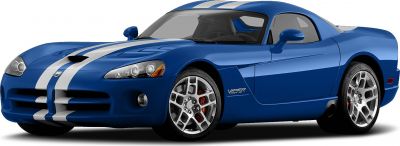
| Production: | 2007-2010 |
|---|---|
| Model Year: | 2008 |
| Length: | 4459 mm175.6 in |
| Width: | 1911 mm75.2 in |
| Height: | 1210 mm47.6 in |
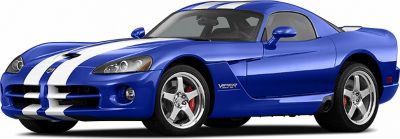
| Production: | 2005-2007 |
|---|---|
| Model Year: | 2006 |
| Length: | 4459 mm175.6 in |
| Width: | 1911 mm75.2 in |
| Height: | 1210 mm47.6 in |
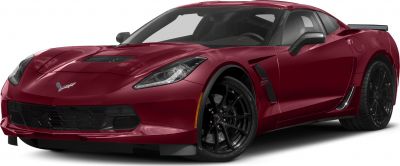
| Model Year: | 2014 |
|---|---|
| Length: | 4514-4567 mm177.7-179.8 in |
| Width: | 1966 mm77.4 in |
| Height: | 1232-1239 mm48.5-48.8 in |
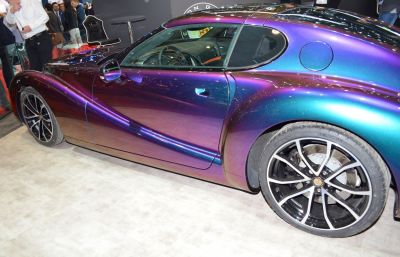
| Production: | 2017-present |
|---|---|
| Model Year: | 2018 |
| Length: | 4519 mm177.9 in |
| Width: | 1966 mm77.4 in |
| Height: | 1234 mm48.6 in |
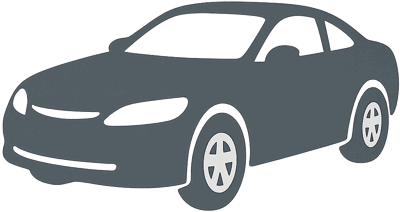
| Production: | 2023-present |
|---|---|
| Model Year: | 2023 |
| Length: | 4398 mm173.1 in |
| Width: | 1850 mm72.8 in |
| Height: | 1135 mm44.7 in |
